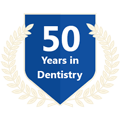
Brushing Techniques for Healthy Teeth
Maintaining proper dental hygiene is essential for general health and well-being. Brushing your teeth on a regular and effective basis is an important part of maintaining good oral health. However, poor brushing practices can result in inadequate plaque clearance, tooth decay, gum disease, and other oral health issues.
This blog provides extensive guidance on tooth struggles, the Importance of brushing techniques for healthy teeth, Common Brushing Mistakes, and Additional Tips. Understanding these approaches will help you improve your dental care routine and maintain a beautiful, healthy smile for years.
Struggles of Tooth while Improper Brushing Habit
Failing to brush effectively might result in a variety of tooth issues. Plaque accumulation can cause cavities, tooth decay, and gum disease. Over time, this can result in discomfort, tooth loss, and infections that spread to other regions of the body. Inadequate brushing also causes a bad smell and ugly tooth stains. To avoid these problems, it is essential to practice good brushing habits and thoroughly clean all parts of your mouth.
Importance of Brushing Techniques
The value of using good brushing methods cannot be emphasized. Brushing your teeth helps keep their natural brightness and keeps your gums healthy. It also improves your overall oral hygiene, resulting in fresh breath and a clean mouth. Consistently using effective brushing methods will boost your confidence and overall health, making routine dental appointments more enjoyable and less frequent.
Choosing the Right Toothbrush and Toothpaste
Toothbrush: Choose a toothbrush with gentle bristles to protect your gums and enamel. A small or medium-sized brush head allows for more effective coverage of all parts of your mouth.
Toothpaste: Fluoride toothpaste can help strengthen your teeth and prevent decay. If you have unique dental needs, like sensitivity or whitening, select a toothpaste that addresses those difficulties.
Step-by-Step Brushing Technique
Mastering the appropriate brushing technique is critical for maintaining good dental hygiene. Follow these measures to ensure that your teeth and gums are well-cleaned and protected.
Positioning: Hold your toothbrush at 45 degrees to your gums. This position allows you to access the area between your teeth and gums, which is where plaque accumulates.
Gentle brushing: Brush your teeth’s exterior surfaces with brief, soft strokes. Pay close attention to each tooth, ensuring that all surfaces (front, back, and chewing surfaces) are clean.
Inner surfaces: To clean your teeth’s inner surfaces, angle the brush vertically and use multiple up-and-down strokes.
Brush Your Tongue: Brushing your tongue softly can help eliminate germs and freshen your breath.
Timing: Brush for at least two minutes twice a day. Using a timer or brushing to your favorite song might help you brush for the entire time.
Rinse and clean: After brushing, properly rinse your mouth with water. Store your toothbrush upright to keep it clean and free of bacteria.
Additional Tips for Effective Brushing
Use gentle pressure: Brushing too aggressively can destroy tooth enamel and irritate the gums. Instead, use light pressure and make delicate, circular strokes.
Brush twice daily: Brushing in the morning and before bed helps to eliminate plaque and germs that collect during the day and night.
Do Not Forget the Gumline: Clean along the gum line, where plaque and germs frequently collect. To ensure thorough cleaning, angle your toothbrush slightly towards the gumline.
Replace Your Toothbrush Regularly: Replace your toothbrush or toothbrush head every 3-4 months, or sooner if the bristles get ragged. A worn-out toothbrush is less efficient for cleaning your teeth.
Consider electric toothbrushes: Electric toothbrushes with oscillating or spinning heads can remove plaque more effectively than manual brushing.
Floss daily: Regular flossing cleans between teeth and along the gumline, where a toothbrush may not be efficient.
Use mouthwash: After brushing your teeth, rinse with antimicrobial mouthwash to decrease germs and freshen your breath. Choose a fluoride-containing mouthwash to prevent cavities.
Common Brushing Mistakes to Avoid
To preserve good oral health, avoid the following frequent brushing mistakes:
Brushing Too Hard: Aggressive brushing can wear down enamel and harm gums over time. Instead, use moderate circular movements.
Not Brushing Long Enough: To ensure that all tooth surfaces are thoroughly cleaned, brush for at least two minutes each time.
Neglecting specific areas: Remember to brush the inside surfaces of your teeth, the gumline, and your tongue to eliminate plaque and bacteria.
Using an old toothbrush: To ensure proper cleaning, replace your toothbrush every 3-4 months or sooner if the bristles are frayed.
Brushing just after eating: Wait at least 30 minutes after consuming acidic foods or beverages before cleaning your teeth to avoid harming acid-softened enamel.
By avoiding these blunders and following correct brushing practices, you may keep your teeth and gums healthy for the long term.
Conclusion:
To summarize, understanding good brushing techniques is vital for maintaining your smile and supporting overall oral health. By combining gentle movements, consistent timing, and frequent equipment change into your daily practice, you can keep your teeth and gums healthy. Remember that a modest investment of time in effective brushing may result in essential long-term benefits to your dental hygiene and general well-being.




